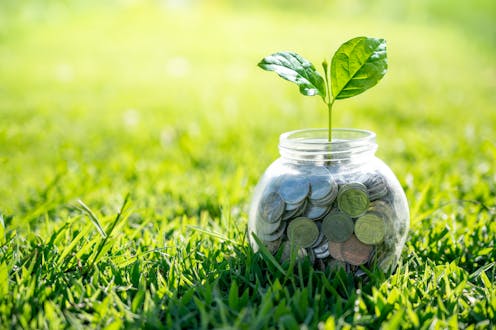In the mood for sustainable funds? How feeling pessimistic can influence where investors put their money
- Written by Adrian Fernandez-Perez, Senior Research Fellow in Finance, Auckland University of Technology

Think about the last time you bought something expensive to make yourself feel better after a disappointment or when you treated yourself with a fancy and expensive dinner after some accomplishment.
Emotions have a strong influence on purchasing decisions. More often than we realise, we make these decisions based on emotions rather than rational calculations and facts. It is well documented that financial decisions are also influenced by emotions.
In low mood periods people are more pessimistic about firms’ prospects, which is associated with decreases in stock market prices.
Because of the growing popularity of assets with a strong focus on environmental, social and governance (ESG) goals – companies with corporate policies that encourage them to act responsibly – we wanted to look at what role emotions can play in determining people’s preference for sustainable investments.
Why do investors choose sustainable investments?
There are several reasons why people may want to invest in sustainable assets. Some may be “social signalling” – they like to talk about how their investments are socially responsible.
Another reason can be found in how someone was raised. An individual’s propensity to invest in socially responsible assets is influenced by having parents owning similar assets or growing up in a family that values environmental sustainability.
Read more: Sustainable investment: is it worth the hype? Here's what you need to know
The “warm glow effect”, which is a good feeling experienced through the act of giving, also explains why investors choose ESG assets. Investors experience positive emotions when choosing sustainable investments, irrespective of the investments’ impact.
But does an investor’s mood influence their preference for sustainable investments? There are several reasons why emotions might affect where people put their money.
The role of mood in our investment decisions
There are two competing theories when it comes to examining the role of mood and sustainable investment.
The first is based on the idea that sustainable assets are generally less risky. In this sense, assets that are considered completely or mostly sustainable have been shown to outperform less sustainable assets in crises, as investors see them as more trustworthy and having fewer structural, legal and reputational risks.
This theory is also based on the idea that a lower mood leads to more risk-averse behaviour. That is, when someone is sad, depressed or angry they tend to become more cautious when making investment decisions and choose investments with lower risk.
Read more: Why ethical investing is hard for big charities
A second and competing theory is based on the idea that a positive mood promotes prosocial behaviours and greater altruism. Investors with lower mood tend to focus on themselves and less about others. As such, they have less preference for sustainable investments.
Happier investors, on the other hand, may be more altruistic and favour sustainable investments because it benefits others (for example, community, workmates and the environment).
Our research has tested these theories, documenting evidence consistent with investors’ greater risk aversion.
More specifically, we found that a worse mood is associated with greater investment in sustainable assets. This is arguably due to a greater risk aversion pushing investors to favour sustainable investments that they perceive as less risky.
Read more: 5 tips to figure out if a tech company on the stock market is an ethical investment
How to identify sustainable funds and test investors’ mood?
To identify sustainable versus non-sustainable funds, we used the Morningstar Sustainability rating. This rating is intended to help investors better understand and manage total ESG risk in their investments. A higher sustainability rating is associated with a lower ESG risk.
To capture the change in the average mood of households for a given month, we used a metric called “onset and recovery” (OR). This metric measures the change in the monthly percentage of seasonally depressed individuals who are actively experiencing symptoms.
Higher OR indicates an increase in symptomatic depression cases and, therefore, lower mood on average. For the Northern Hemisphere, OR is high during autumn (September), low during spring (March), and moderate during summer and winter. Southern Hemisphere countries experience the same pattern in reverse.
We contrasted OR levels in relation to investment in sustainable equity mutual funds in 25 countries over the 2018–2021 period.
In general, mutual funds with high sustainability ratings tended to attract more capital, suggesting that investors value sustainable investments.
More importantly, however, we found that when there was an increase in the percentage of seasonally depressed individuals, capital inflows into high-sustainability funds increased relative to low-sustainability alternatives (an extra 0.070% per month or 0.84% per year).
For an average mutual fund with a size of US$100 million, this additional capital inflow equates to $840,000 per year.
This negative association is consistent with a risk-aversion interpretation, supporting the conclusion that lower mood leads to more sustainable investments as investors perceive them as being less risky.
Read more: One small thing you can do for the environment: invest ethically
Our study comes with a caveat. Given the features of our data, we cannot test if the investors’ mood improves after investing in sustainable funds. This would not only confirm that sustainable investments are a safer option, but also that investing in them will boost people’s mood.
So, is sadness good for the environment and society?
Our research explores a potential channel that could explain people’s preference for sustainable investments.
Our findings suggest that, when it comes to investing in sustainable equity mutual funds, risk aversion triggered by negative moods was a more likely cause of increased investing than the potential happiness connected to their pro-social behaviour.
This does not imply that sadness is good for the environment or society, it rather confirms that investors consider sustainable investments a safer option.
Authors: Adrian Fernandez-Perez, Senior Research Fellow in Finance, Auckland University of Technology



















